More creates more
Course: Participatory Design
Area of profession: User centered design, particiaptory design, UX research, analytic methods & Thoughtful interaction design.
Duration: Full time, 10 weeks
Method/Tools: Miro, Teams, Thematic analysis, Figma, Future Workshop, Co-design workshops, Prototyping.
Final report: here.
Final grade: Pass with excellence
Other: School assignment and a real-life project with real stakeholders
BEHIND THE PROJECT
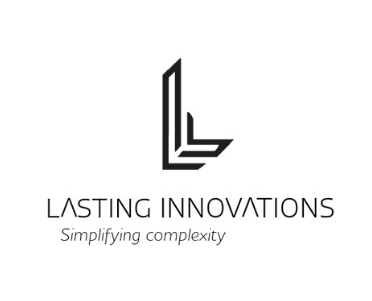
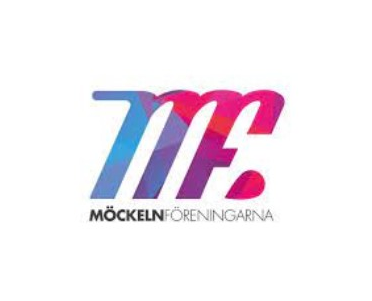
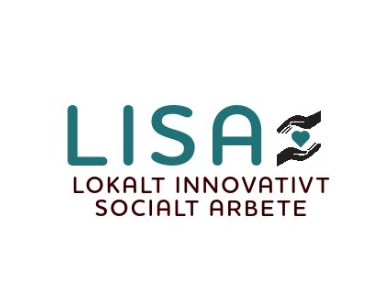
THE ASSIGNMENT:
– Carry out an analysis of users and the context (user requirement/content analysis)
– Design and present a prototype of interactive products or services for users (user oriented design)
– Explain, discuss and argue for choices of methods and techniques, the design process, and the design suggestion (method, data collections, data analysis, discussion and a final product, in the form of a prototype).
TEAM:
We were 4 students working on this project together with stakeholders.
The project was an team effort but we took on different rolls along the way. I´ll describe my parts along the way.
PROBLEM STATEMENT:
VISION STATEMENT:
The vision of this project is to create a digital solution that would work as a bridge between the NPOs and the individuals who would like to volunteer in the region of Karlskoga and Degerfors. We aim to make recruitment more efficient and easily accessible for individuals and also for the NPOs to have a platform to showcase their events that are in need of volunteers
Sneak peak of the prototype
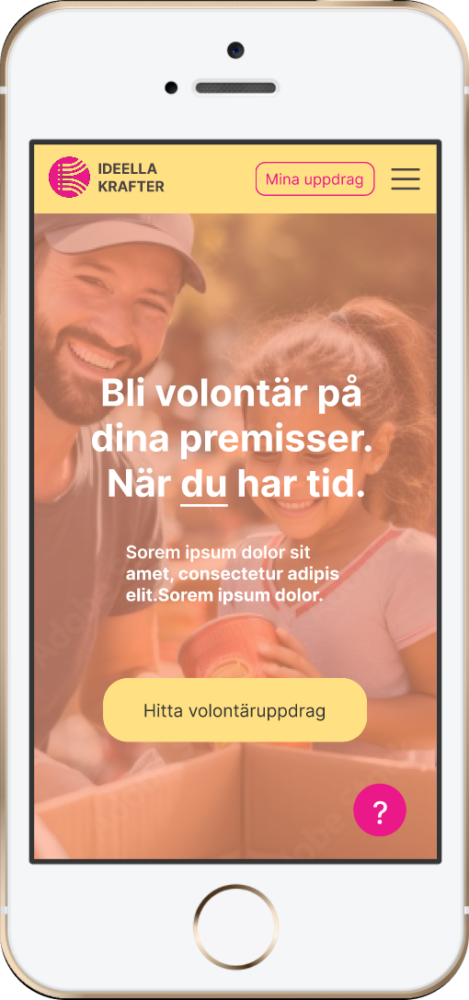
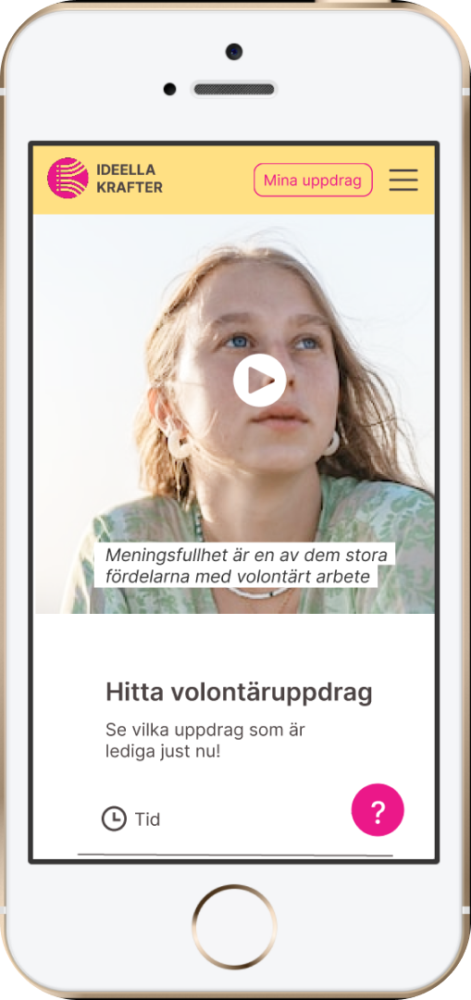
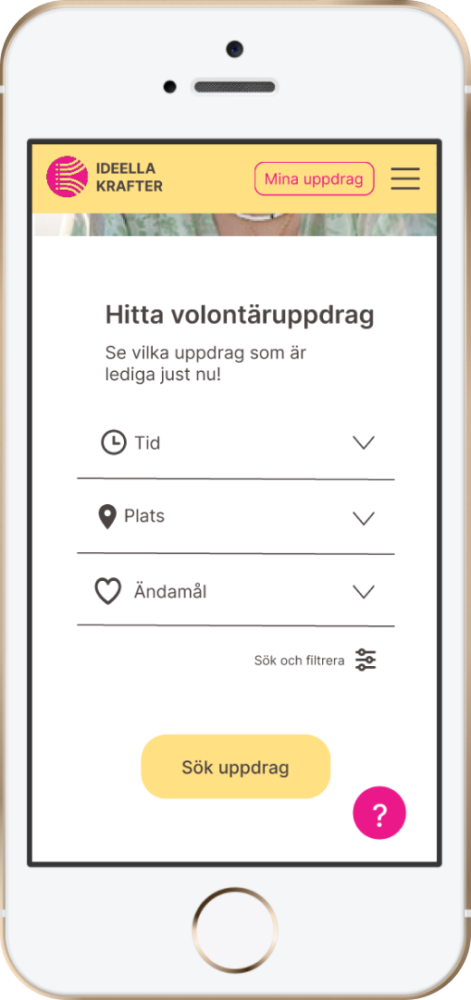
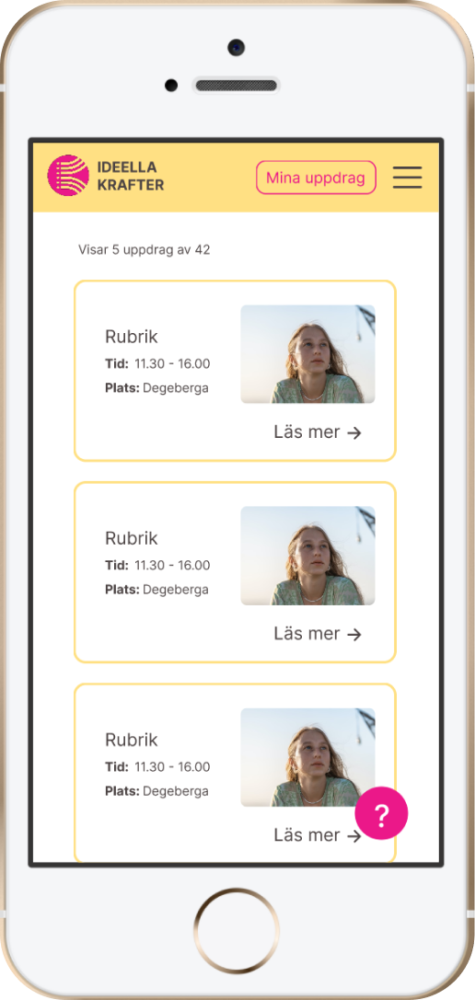
PARTICIPATORY DESIGN
PARTICIPANTS:
The project involved clients from non-profit organizations and LISA network members, seeking a digital tool to streamline volunteer recruitment. It also included other non-profit representatives and municipal employees. Participants, willing to brainstorm ways to boost dedication in volunteer activities and share their expertise, were chosen. We aimed to combine insights from those experienced in volunteer recruitment with perspectives of potential volunteers. This approach was intended to yield multifaceted, nuanced results representing the diverse end user group.
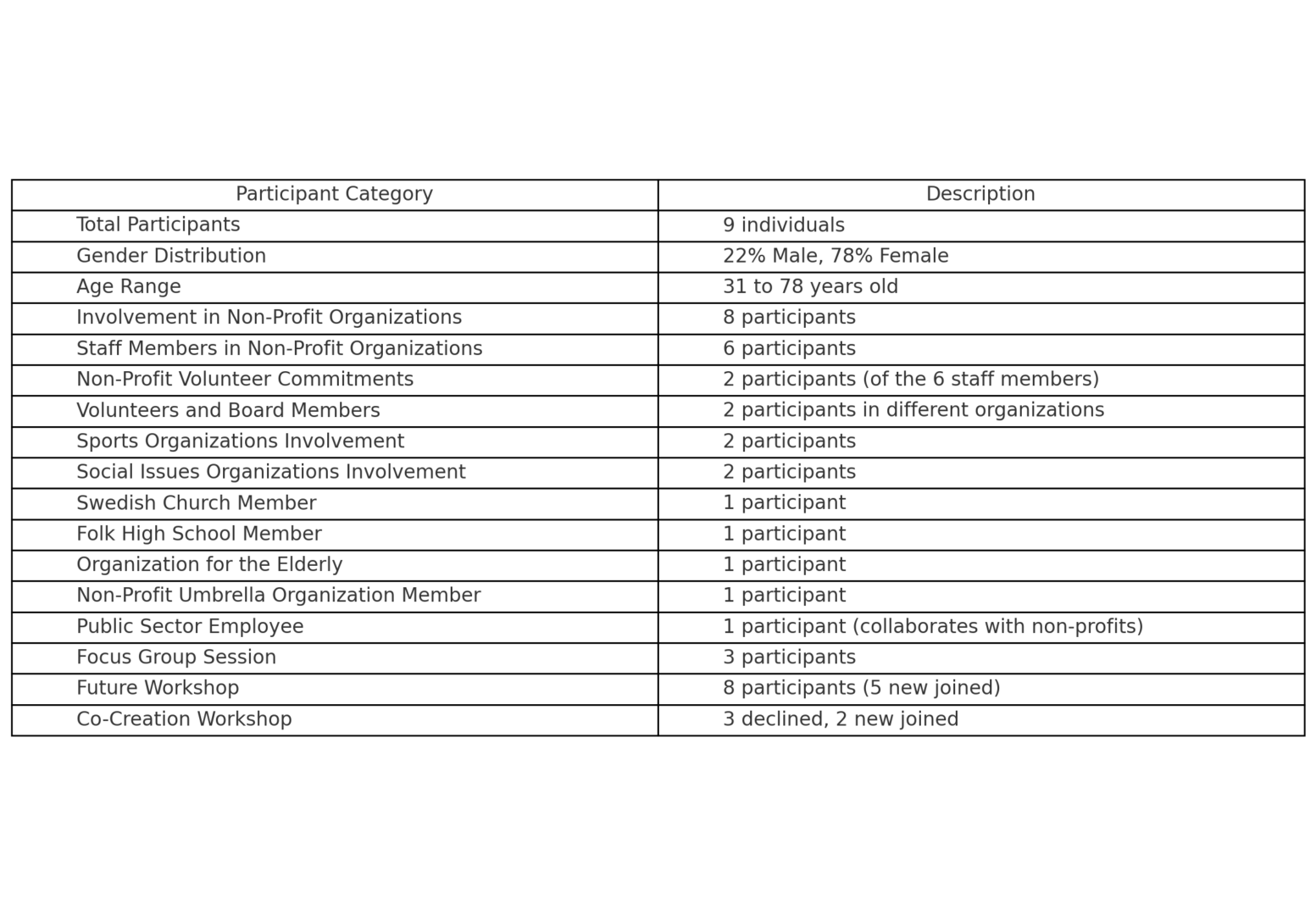
METHODOLOGY:
We gathered data through a focus group and two workshops in late 2023, structured into two key phases: ’The What and Why’ and ’Co-creation’. The sessions, each lasting two hours, combined introductions and collaborative group activities.
Our approach was qualitative, focusing on detailed feedback through participatory design. This method ensured equal collaboration between our team and participants, promoting innovation by incorporating varied experiences.
We employed a future workshop method, designed to encourage innovative thinking and deeper engagement. This method had five stages: preparation, critique, fantasy, implementation, and follow-up.
Additionally, we conducted a preliminary focus group for initial insights and a co-creation workshop for the prototype’s interface, aiming to develop a well-rounded perspective for our project.
My contribution:
As I mentioned earlier, that even though this project was very much an team effort, we did divided the tasks between us. Not only beacuse of work efficiency but also because of connections, personal preferences and what worked best at that moment.
In this specific part of the project, my contribution was:
– Planning and discussing how to conduct and implement the workshops.
– Being a co-facilitator during the workshops. This meaning help keeping the discussion alive and helping the participants to navigate the process of a future workshop. Take notes and keeping track of the time frame.
Here is an example and a glimpse of the documentation in Miro during the Implementation Phase.
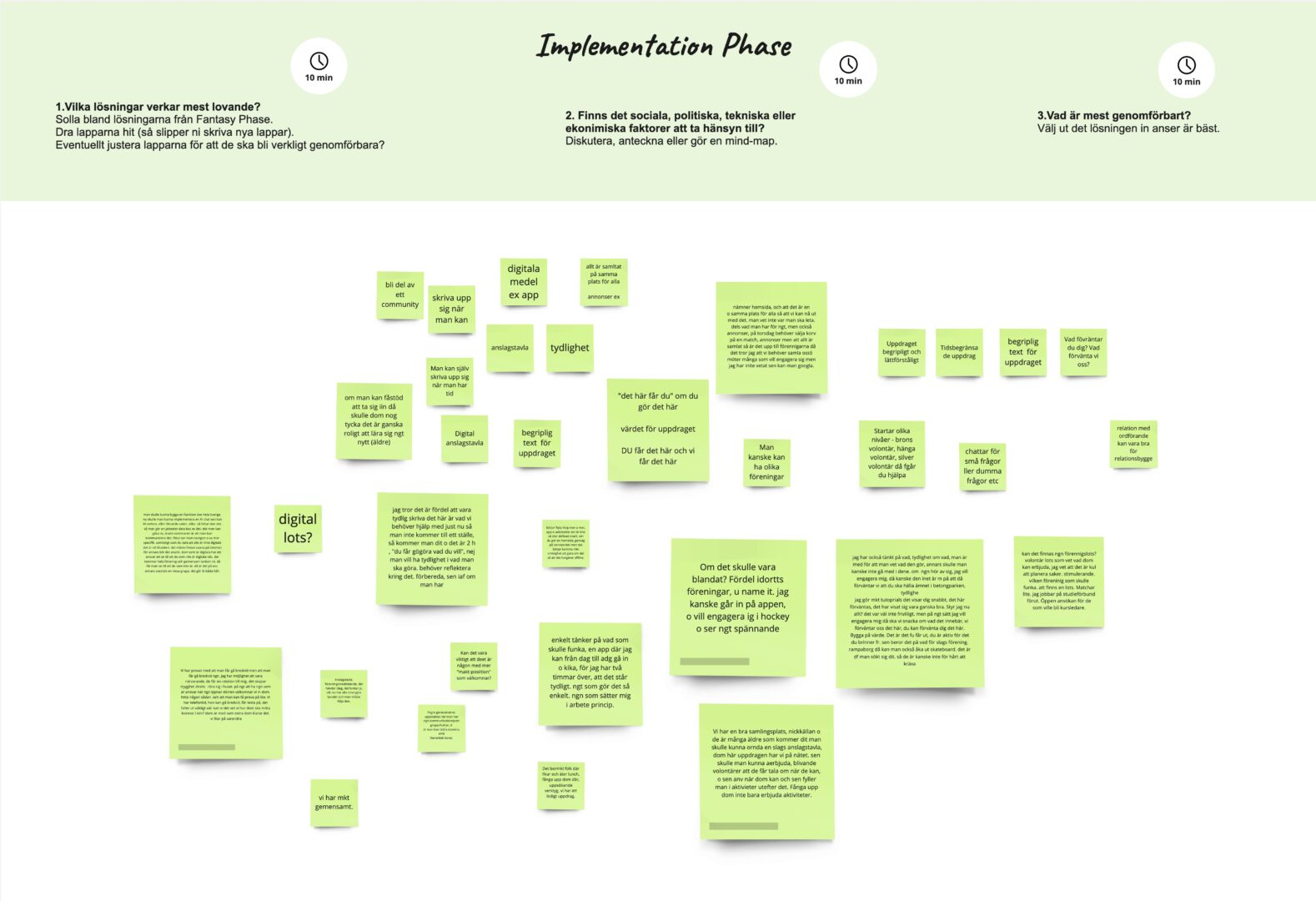
DATA ANALYSIS:
During our workshops, we didn’t record any videos or audios. We thought about it, but we didn’t want the participants to feel pressured to perform. So, we just took detailed notes of what everyone said. Then, we analyzed these notes thematically, using both inductive and deductive methods.
In the second phase, the ’Co-creation’, we focused more on analyzing specific parts of our notes. We looked for themes on a basic level, without trying to read too much into what people were saying. We thought this approach would let participants share their knowledge more freely, which fits with participatory design, where everyone’s observations and context matter.
The whole team first got familiar with the data and then we started to sort out the initial feedback in Miro. We grouped and named the themes, and discussed and agreed on them.
For the second phase of analysis, we specifically looked at ’Branding and Visuality’, and ’First Impressions’. We had already gotten a lot of great, detailed feedback, and now we wanted to focus more on these areas to help us with our final prototypes. Again, we reviewed the data, and did a more focused analysis. We found consistent results. Finally, we used these insights to start shaping the requirements for our prototype designs and created a persona.
My contribution:
– Coding the data for the thematic analysis
– Thematised the data
– Sorted and extracted requirements from the data
– Created persona
After coding the data, themes were created and requirement extracted.
The headlines in the colored boxes is the themes, under the headline is the needs and painpoints (processed from the data). Finally the arrows points to the technical requirements.
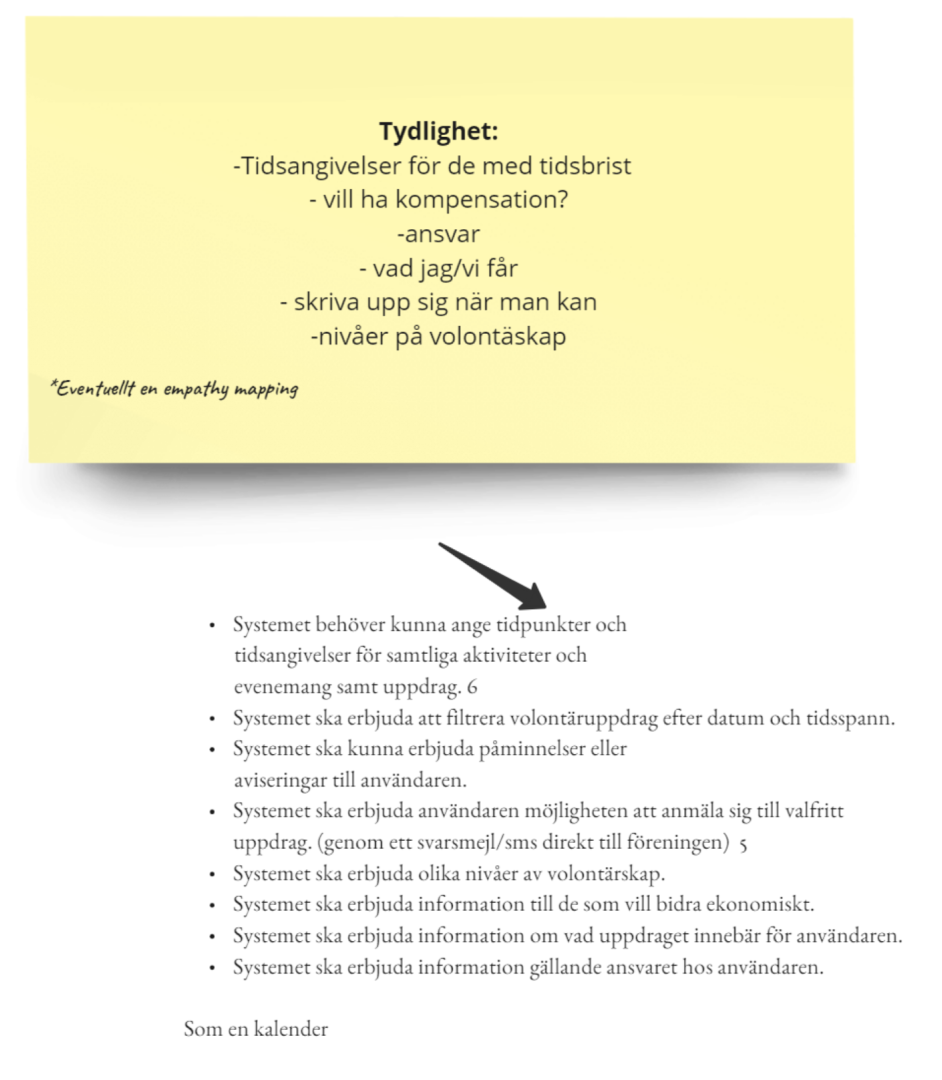

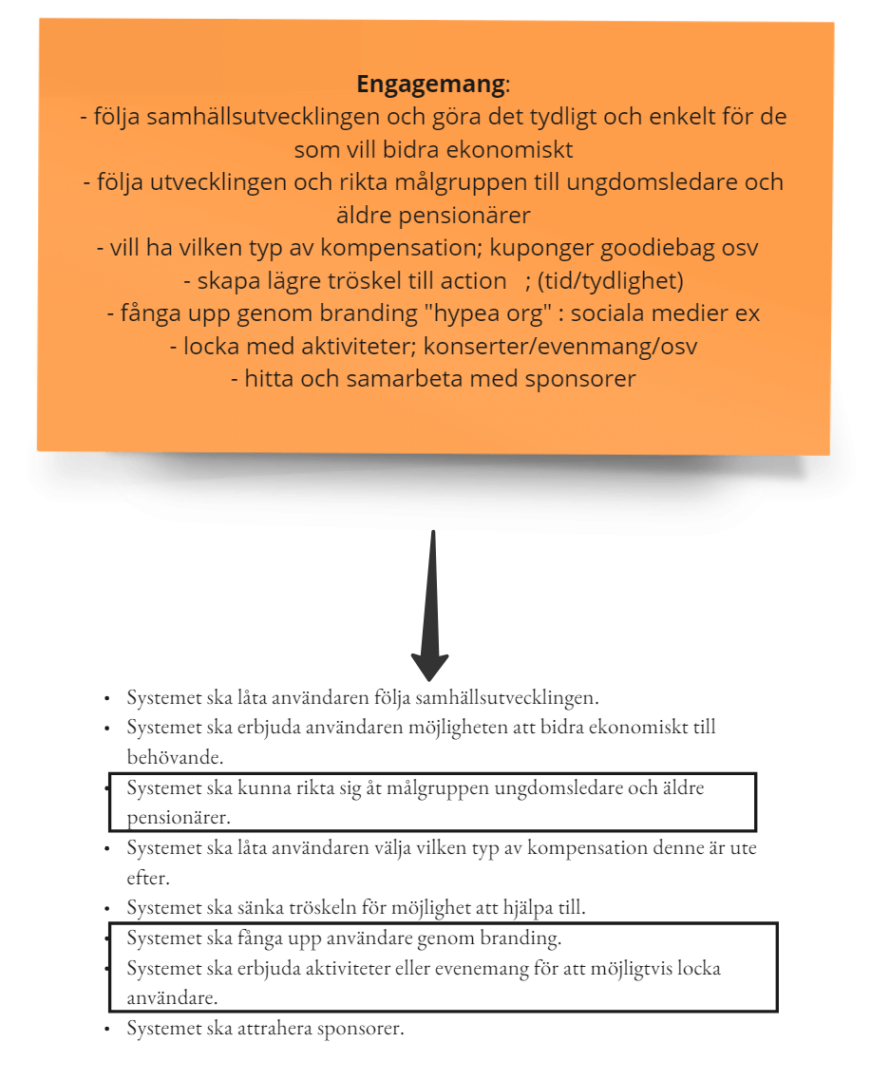


THE PROTOTYPE PHASE
My contributions: Iteration of the logo, color fonts, mockups and the final interactive prototype.
Once the requirements were set we started with sketches and wireframes.
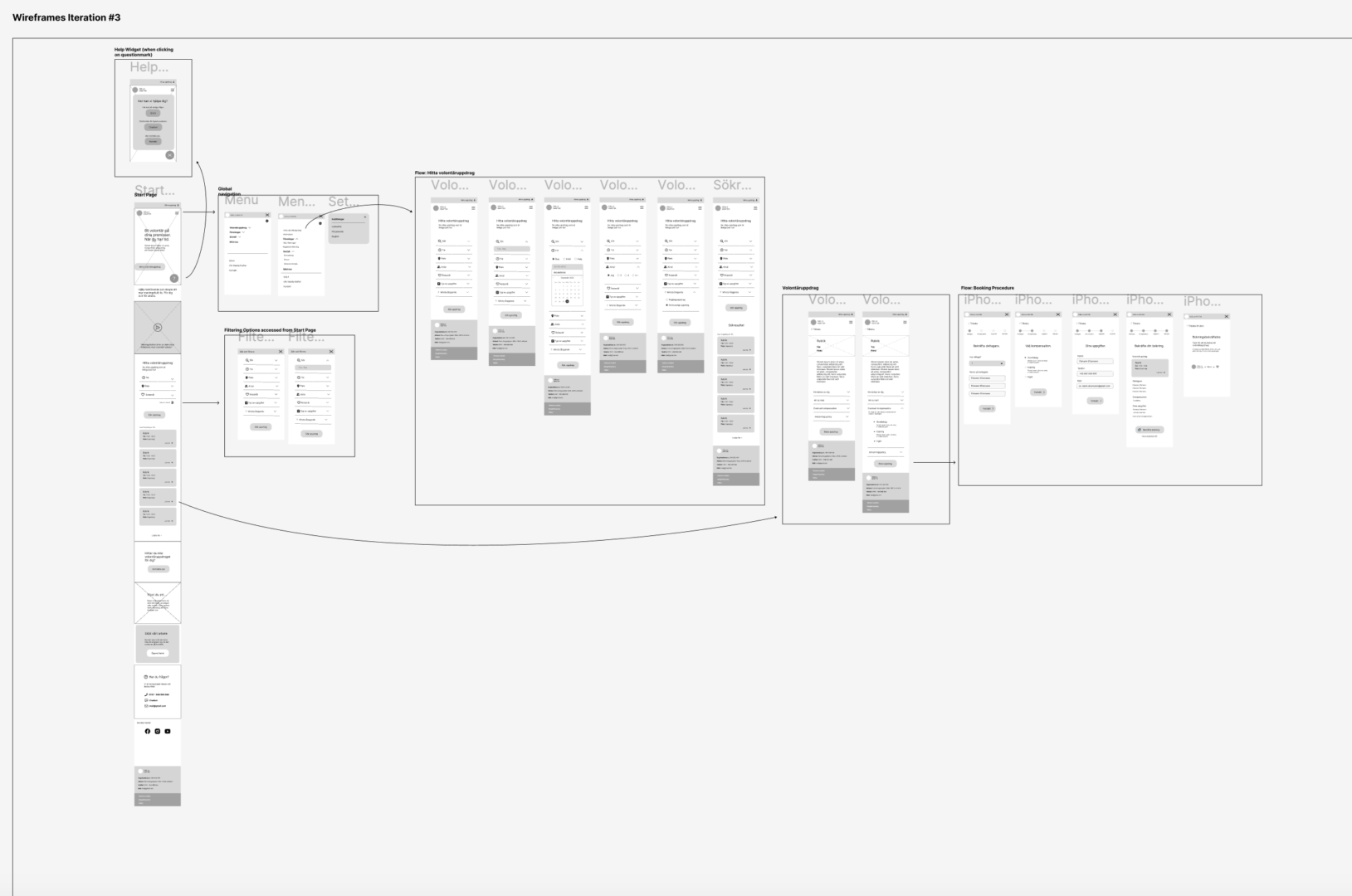
And continued with mockups and graphical profile.
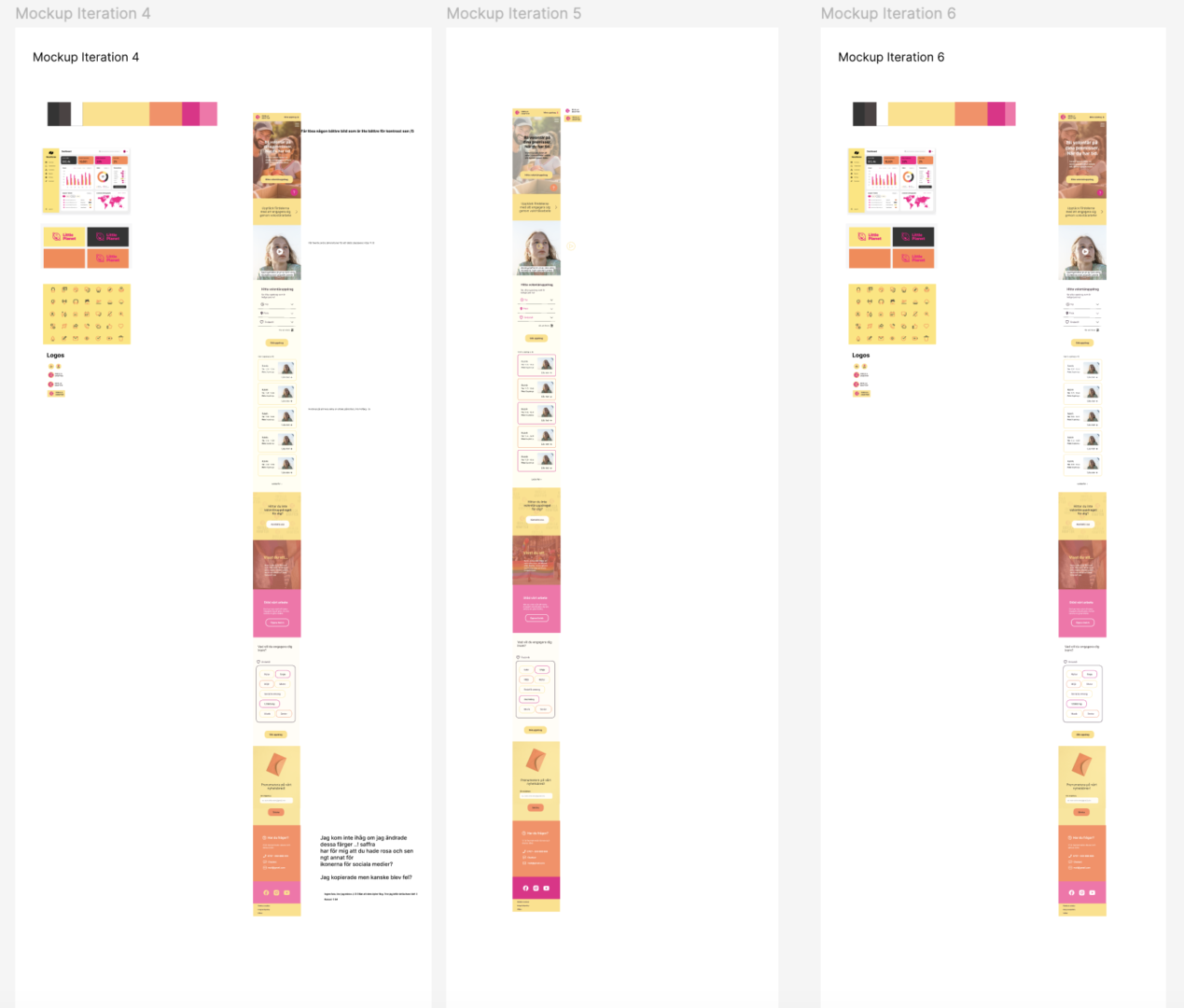
the final prototype
Reflection
In this project, we aimed to assist non-profit organizations (NPOs) in the Karlskoga and Degerfors municipalities with their recruitment of volunteers by creating a digital prototype using a participatory design approach. The strengths of this methodology included collaborative engagement between designers and participants, ensuring that the resulting digital solution addressed real-world challenges and met the needs of the end users. However, this approach also posed significant challenges, primarily related to the time and effort required from both participants and the research team.
One major difficulty encountered was the investment of time necessary for thorough user involvement throughout the process. The future workshop, in particular, required extensive time to cover all relevant topics in depth, and there were instances where participants could not prioritize their requirements due to time constraints. This issue was partly mitigated by a follow-up survey, although the response rate was low.
To address the limitations encountered, it became clear that setting clearer boundaries for the project scope is essential. The initial scope was broad, leading to difficulties in managing time effectively and ensuring participant engagement. By learning to better define and limit the scope in future iterations, we could focus more narrowly on specific user needs and feedback, ultimately dedicating more time to refining the prototype.
Future iterations of this project should prioritize incorporating summative and formative evaluations throughout the design process, ensuring that the digital tool developed is both usable and effective. Additionally, planning workshops more meticulously and balancing the time spent on evaluations and workshops would help gather more valuable data and enhance the overall design.
In conclusion, the participatory design approach proved beneficial in creating a user-centered prototype for easing NPO recruitment of volunteers. However, refining our methodology to address time management and scope definition will be crucial for future success.
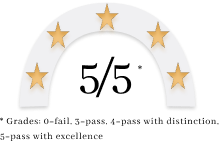
The final individual grade of this assignment was based on:
1) Project plan and presentation
2) Prototype, report and presentation
3) Individual report
